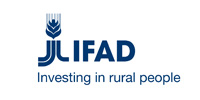
By Keikantse Lesemela Southern African Development Community (SADC) Deputy Executive Secretary – Regional Integration, Angele Makombo N’tumba has urged regional members to collaborate in implementing the newly approved Natural Resources and Wildlife Frameworks in the region. The newly approved wildlife frameworks align with the SADC vision and contribute to Pillar 1 (Peace, security, and good governance) and crosscutting issues. High-level instruments that govern Natural Resources Management include the Protocol on Wildlife Conservation and Law Enforcement (1999), the Protocol on Forestry (2002), the Protocol on Shared Water Course (2000), and the Protocol on Fisheries (2006). These protocols guide the strategies and programs for regional cooperation, facilitating deeper integration. Launching the approved Natural Resources and Wildlife Frameworks recently, SADC said regional integration is not just a concept but a necessity in natural resources and wildlife conservation. “The challenges we face extend beyond borders, requiring collaborative and comprehensive responses,” she said, adding that the approved frameworks embody a shared commitment to address these challenges collectively. “As stewards of rich biodiversity, we have a collective responsibility to ensure its sustainable use and conservation for current and future generations.” The SADC cluster meeting of Ministers responsible for Environment, Natural Resources, and Tourism last year approved key strategies, including Law Enforcement and Anti- Poaching (LEAP) Strategy, Wildlife Based Economy (WBE) Strategy Framework, Transfrontier Conservation Area (TFCA) Programme, Multilateral Environmental (MEA) Guidelines, SADC CITES Engagement Strategy. N’Tumba said collaboration is paramount in implementing these strategies, bilaterally, regionally, and through global partnerships. The LEAP Strategy emphasizes transnational collaboration; the Wildlife Economy calls for alliances on international, regional, and national levels; the TFCA Programme implies collaboration among SADC Member States; and the CITES Engagement Strategy recognizes the significance of effective regional collaboration in international forums. “These strategies serve as blueprints for a sustainable future in our region and beyond. Governments are urged to implement them, international partners are sought for global collaboration and NGOs, CSOs, including CBOs, are encouraged to contribute with expertise and fostering public awareness.” SADC, which is composed of 16 Member States envisions sustainable regional development as per the SADC Vision 2050 and operationalizes it through the SADC Regional Indicative Strategic Development Plan (RISDP) 2020 - 2030. The author is a journalist at the Boswana Guadian -MidWeek Sun in Botswana





